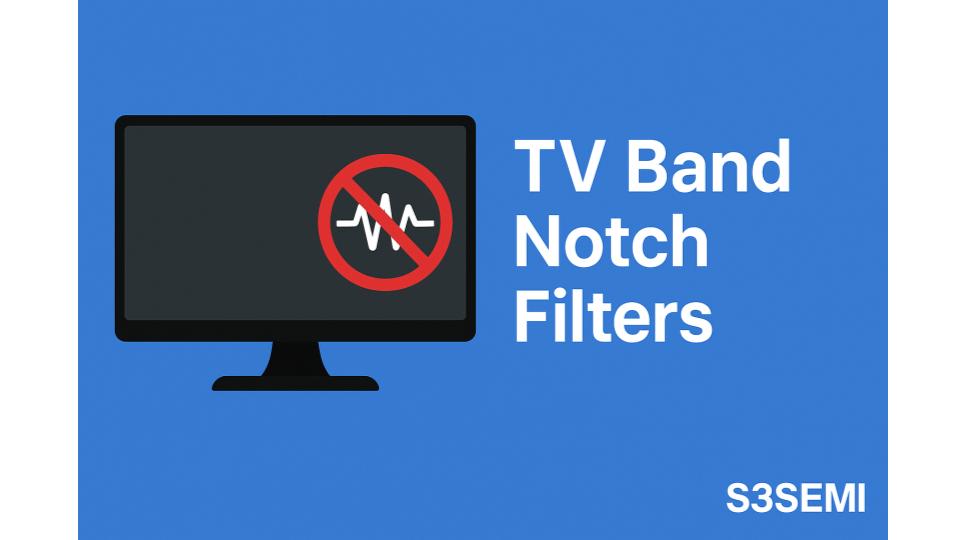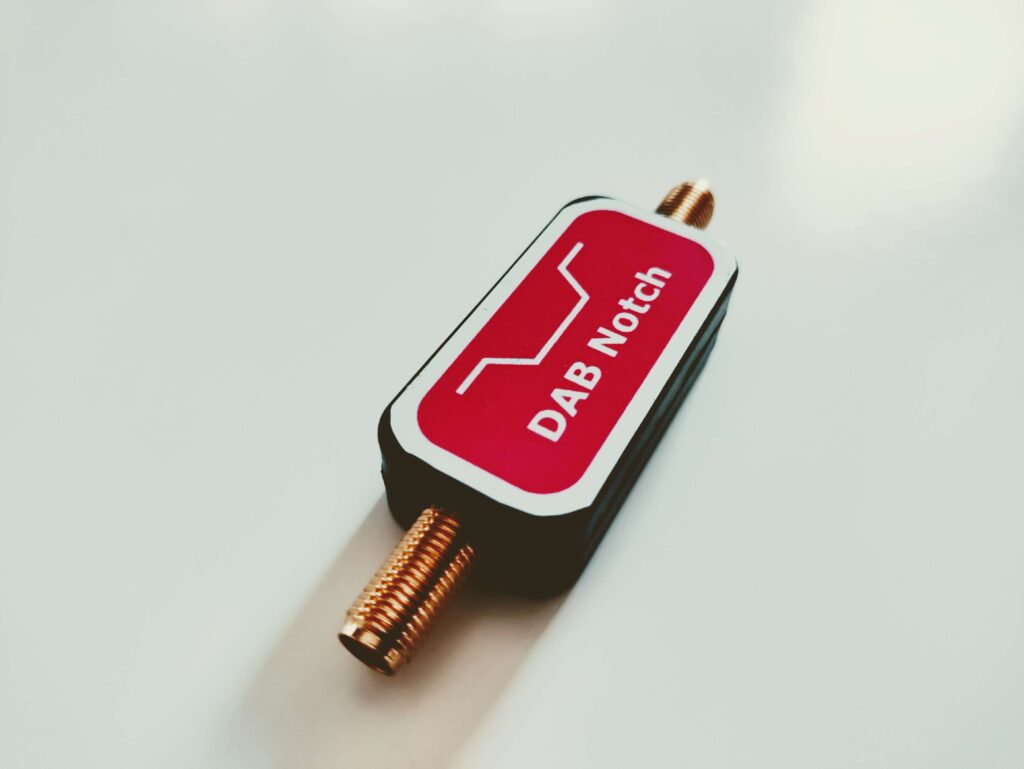📺 In today’s world of crowded airwaves, managing interference is key — especially if you’re using devices like SDRs, scanners, ham radios, or wireless microphones. One common culprit? TV broadcast signals.
If you’re experiencing strong signal interference in the VHF or UHF TV bands, a TV band notch filter might be the perfect solution. This article explains what TV notch filters are, how they work, and when to use them.
🧰 What Is a TV Band Notch Filter?
A notch filter (also known as a band-stop filter) is an RF component designed to block a narrow range of frequencies while allowing others to pass through unaffected.
A TV band notch filter specifically targets and attenuates frequencies used by TV broadcasters — either in the VHF or UHF range.
A DAB or TV Notch filter to eliminate signals in 174 MHz to 240 MHz band
📡 TV Broadcast Frequency Bands (Global Overview)
| Band | Frequency Range | Used For |
|---|---|---|
| VHF Band I | 47–68 MHz | Analog TV (mostly phased out) |
| VHF Band III | 174–240 MHz | Digital TV, DAB, wireless audio |
| UHF Band IV/V | 470–862 MHz | Digital TV (DVB, ATSC, ISDB) |
Notch filters can be custom-built or pre-made to reject specific sections of these bands.
🤔 Why Use a TV Band Notch Filter?
Reduce Overpowering Local TV Signals
If you’re using an SDR, scanner, or low-noise receiver, strong TV transmitters nearby can overload your front end, making other signals unreadable.
Cleaner Spectrum for Wireless Microphones
In professional audio or church installations, wireless mics operating near TV Band III or UHF can suffer from interference without a proper filter.
Block Known Interference
In crowded urban areas, TV towers can create a noisy RF environment — a notch filter lets you “carve out” the problematic range.
🛠️ Types of TV Band Notch Filters
🔧 Fixed Notch Filters
- Pre-set to a specific band (e.g., 174–230 MHz)
- Simple and reliable
- Great for installations where the interference band is well-known
🎛️ Tunable Notch Filters
- Adjustable to fine-tune the rejection band
- Useful for field work or environments with varying interference
- Typically more expensive and require calibration
📦 Inline Coax Filters
- Plug-and-play form factor
- Commonly used in antenna systems
- Often sold as FM notch filters or TV reject filters
🎯 Real-World Use Cases
| Use Case | Suggested Notch Range |
|---|---|
| SDR users overloaded by VHF TV signals | 174–230 MHz (VHF Band III) |
| Wireless mic in theater or church | 470–700 MHz (UHF) |
| Aviation enthusiasts using VHF radios | 174–240 MHz notch to avoid adjacent TV signals |
| Amateur radio operator near a TV tower | Custom notch based on local TV transmission frequencies |
✅ Pros and Cons
| Pros | Cons |
|---|---|
| Effective at removing known noise | Narrowband — won’t handle wideband noise |
| Improves dynamic range for SDRs | May reduce signals close to the notch |
| Passive — no power needed | Needs correct installation orientation |
| Easy to integrate with coax systems | Custom notch design requires RF knowledge |
🏁 Final Thoughts
If you’re dealing with TV interference, especially in urban areas or near transmission towers, a TV band notch filter can make a dramatic difference in your setup. From SDR performance to wireless microphone clarity, filtering out just the right slice of the spectrum gives you cleaner, quieter signals.
Whether you’re a ham operator, RF hobbyist, or professional installer, having a TV notch filter in your toolbox is a smart move.

